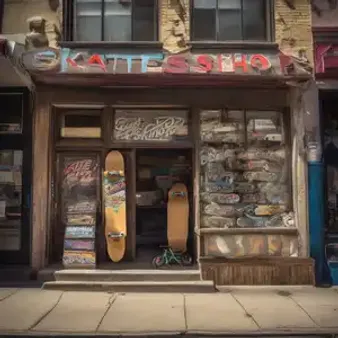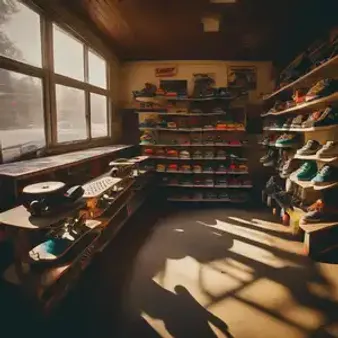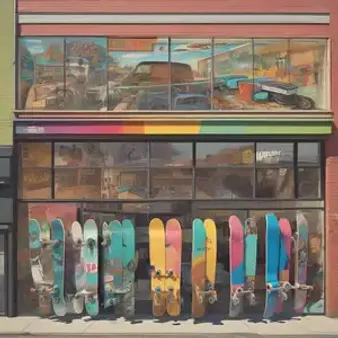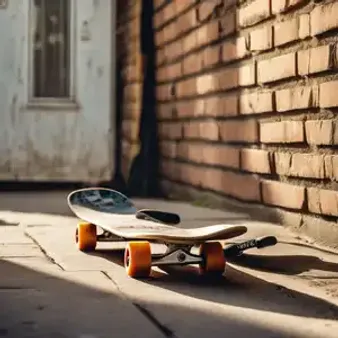Table of Contents
Ever wondered where skaters hung out before mega online stores? kizworld takes you back in time to explore the birth of the first skate shop, those pioneering hubs that didn't just sell decks and wheels, but nurtured a vibrant culture.
Feature | Information |
|---|---|
First Skate Shops | Pioneering businesses that emerged to cater to the growing skateboarding community. |
Impact | Instrumental in shaping skateboarding culture, providing a space for skaters to connect and progress. |
Evolution | Transformed from small, independent shops to a global industry with iconic brands and retailers. |
Importance Today | Remain vital community hubs for skaters, offering a sense of belonging, expert advice, and support. |
The Pioneers Who Opened the First Skate Shops
Imagine a time before you could snag a skateboard online - no Amazon, no late-night scrolling! Back in the day, if you wanted to get your hands on a board, you needed a physical shop. These weren't just stores; they were like clubhouses for skaters. The very first ones popped up in the late 1960s and early 1970s, fueled by the growing popularity of skateboarding.
One of the earliest known skate shops was "Hobie Surfboards" in Dana Point, California. Opened in 1954 by surfing legend Hobie Phillips, it initially focused on surf gear. But as skateboarding started gaining traction, they caught the wave and began stocking skateboards and parts. This move proved to be a game-changer, turning Hobie Surfboards into a hangout spot for both surfers and skaters.
Shop Name | Location | Year Opened |
|---|---|---|
Hobie Surfboards | Dana Point, California | 1954 |
Makaha Skateboards | Santa Monica, California | 1976 |
Val Surf | Woodland Hills, California | 1971 |
Around the same time, other pioneers like "Val Surf" in Woodland Hills, California, and "Makaha Skateboards" in Santa Monica emerged. These shops weren't just selling boards; they were building a community. They became hubs where skaters could meet, share tricks, and geek out over the latest gear. Think of them like the cool kid's hangout spot, buzzing with energy and the smell of fresh grip tape. To learn more about the evolution of skateboarding, check out the history and culture of skateboarding.
The Pioneers Who Opened the First Skate Shops
The Impact of the First Skate Shops on Skateboarding Culture
These early shops were like magnets for skaters. Imagine walking into a place where everyone shared your passion for this new, rebellious sport. It was electric! They became more than just places to buy boards; they were community centers, places to swap stories about epic bails and learn new tricks. It was like having a secret clubhouse, just for skaters. You could check out the latest gear, get advice from the older, cooler skaters, and maybe even score an invite to a secret skate spot.
This sense of community was HUGE for skateboarding's growth. The first skate shops gave birth to a culture – a shared language, style, and attitude. Think about it: without these hubs, skateboarding might have stayed a passing fad. Instead, these shops nurtured it, helping it evolve into the global phenomenon it is today. Want to see how skateboarding gear has changed? Check out the evolution of skateboarding wheels and bearings!
Element | Impact |
|---|---|
Community Building | Fostered a sense of belonging among skaters, creating lasting friendships and connections. |
Skill Development | Provided a space for skaters to learn from each other, pushing the boundaries of what was possible on a board. |
Style and Culture | Became incubators for skateboarding fashion, music, and art, shaping the sport's unique identity. |
The Impact of the First Skate Shops on Skateboarding Culture
From Humble Beginnings to Global Phenomenon: The Evolution of Skate Shops
Those early shops, with their smell of fresh grip tape and boards stacked high, weren't destined to stay small. Like a rad trick catching everyone's eye, skateboarding exploded in popularity. Shops went from hidden gems to bustling hubs, some even branching out, like online skate shops in Canada, to keep up with the demand.
This growth wasn't always easy. Some shops kept their local vibe, like a close-knit crew. Others went big, becoming the brands we know today. It's like when your favorite skater goes pro - still rooted in the love of skating, but on a whole new level. To see how this passion translates to gear, check out the best skateboarding wheels and bearings.
Era | Characteristics |
|---|---|
Early Days (1960s-1970s) | Small, independent shops focused on community and core skate gear. |
Growth and Expansion (1980s-1990s) | Increased popularity led to larger shops, skate brands, and mail-order catalogs. |
Modern Era (2000s-Present) | Mix of independent and chain stores, online retailers, and a global skate industry. |
From Humble Beginnings to Global Phenomenon: The Evolution of Skate Shops
Finding Your Community: The Importance of Skate Shops Today
Stepping into a skate shop today is like entering a time capsule. It's not just about grabbing the latest WKND skateboards or a fresh pair of New Balance SB shoes. It's about tapping into that same energy the first skaters felt – a shared love for the ride, the spills, and the whole skateboarding vibe. Think of it like joining a band, except instead of instruments, you've got decks and ramps. You'll find that same camaraderie, that "we're-in-this-together" feeling that's been around since the very first shop opened its doors.
Now, you might be thinking, "Why not just buy online? It's easier!" And yeah, clicking "add to cart" is super convenient. But trust me, nothing beats the experience of rolling into a local skate shop. Need help choosing the right board size? Curious about how to land a 180? Want to hear about a sick new skate spot? The folks at the shop have got your back. They're like walking, talking skateboarding encyclopedias, always stoked to share their knowledge and passion. Plus, you never know who you'll meet – maybe your next skate buddy or even a local pro!
Benefit | Description |
|---|---|
Expert Advice | Get personalized recommendations on gear, techniques, and local skate spots. |
Community Connection | Meet fellow skaters, share stories, and find your tribe. |
Support Local Business | Contribute to the skateboarding community and keep the stoke alive. |
Finding Your Community: The Importance of Skate Shops Today
Final Thought
From those early days to now, the first skate shops paved the way for a global phenomenon. More than just retail spaces, they were and remain vital community centers, fostering creativity, camaraderie, and the pure stoke of skateboarding. Next time you step into your local shop, take a moment to appreciate the legacy that lead to that very spot.